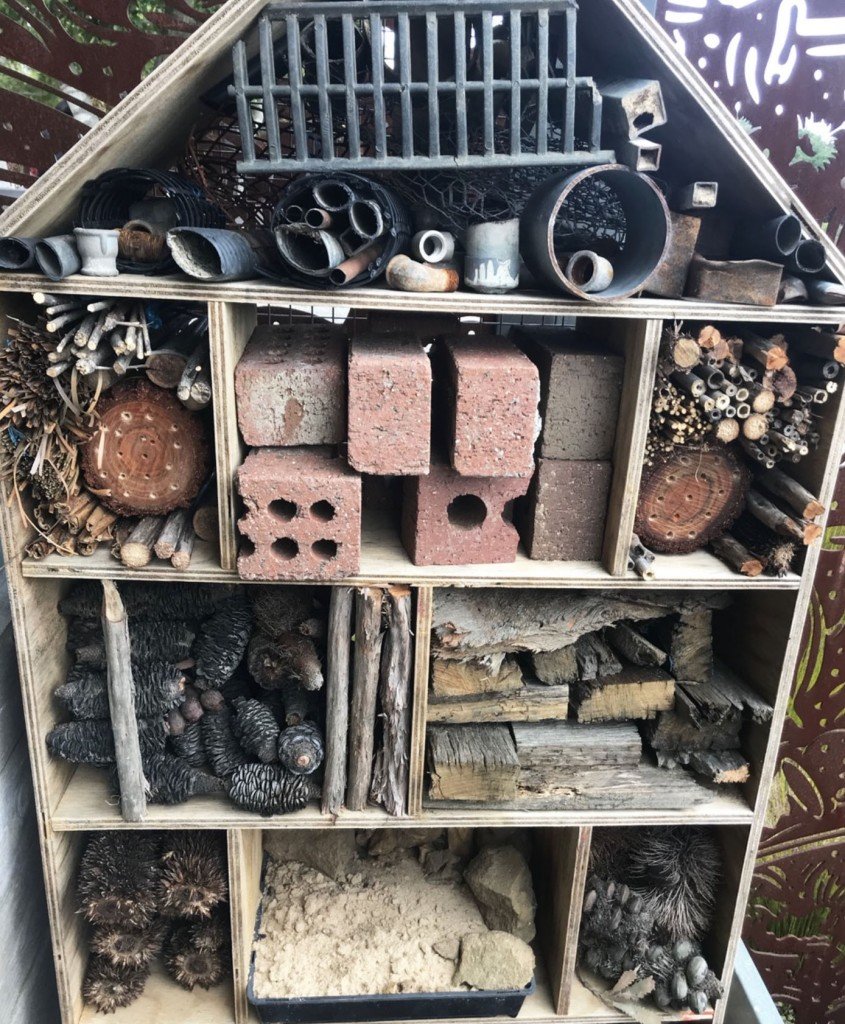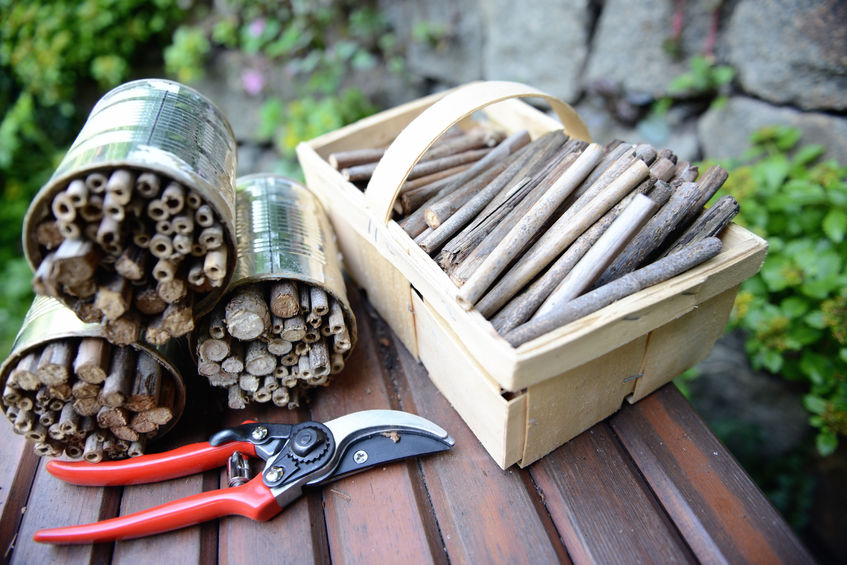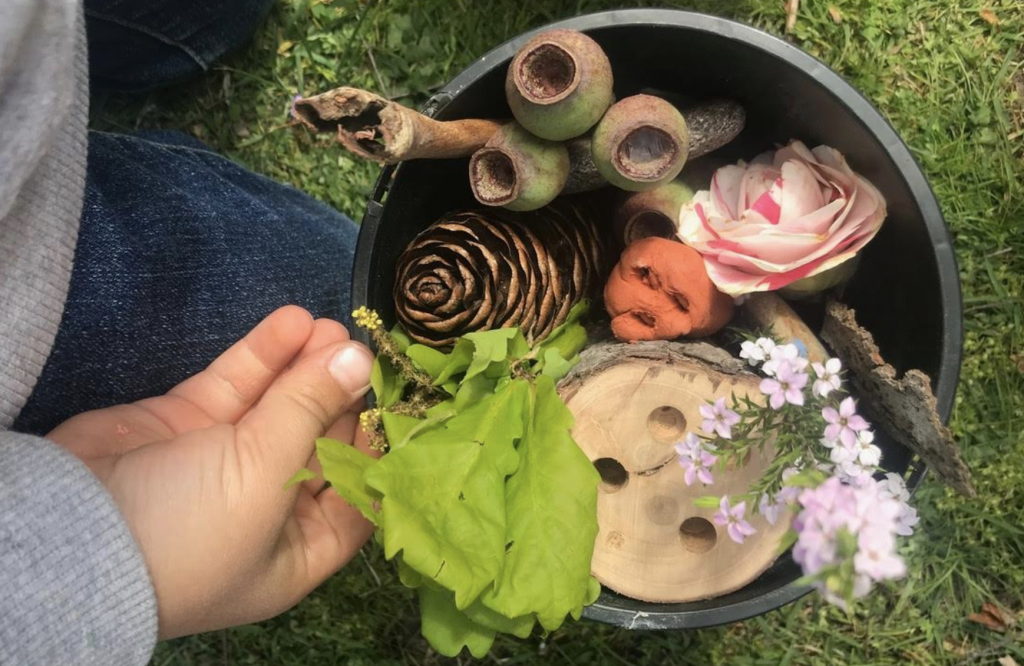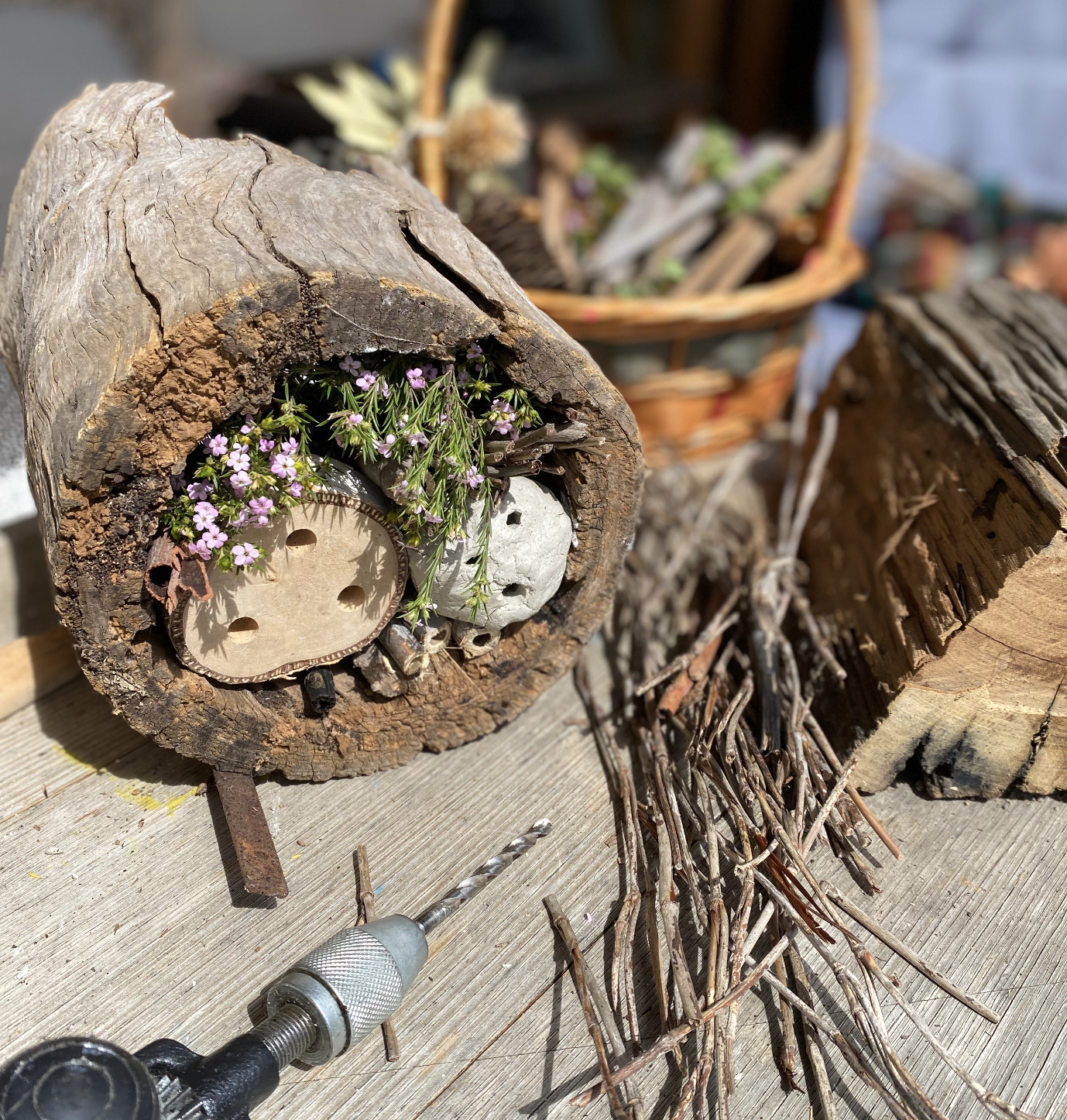Have you ever wanted to try a fun, easy and hands on project with your kids using only recycled materials and off cuts? Why not create a native bee habitat in your backyard! Native bees are a bee-utiful addition to your garden adding fuzzy blue, metallic green and golden fluffy superheroes that zoom amongst your veggies and native flowers. They are also more effective pollinators than their social cousins so why not book them in for a stay in your bee ranch and enjoy the fruits of their labour as well.
Choosing your bee hotel location
Before you construct your bee hotel, you should consider the best location. Protection from the elements is important as bees are unlikely to spend the whole day in searing sun or being pelted by wind and rain. They will naturally seek a sheltered position so find a suitable spot in your garden before you get started. Although bees naturally nest in low areas, it’s a good idea to elevate your hotel at least one metre off the ground but not too high, between knee and eye level is a good guide.
The best bee hotels are close to natural attractions; food, water and sunshine. They will need a food source within reasonable flying distance, so planting a variety of pollen-rich native plants that flower at different times of the year is a good start. A water source and a wild area that resembles natural bush, with leaf litter, twigs and rotting material will also make the bees feel right at home.

Why – The benefits of native bees in your garden
Many solitary bee species pack pollen in loose dry balls on their legs or under their abdomen to carry it back to their nests. In contrast, social bees moisten their pollen with nectar to pack it on their legs. The dry pollen carried by solitary bees may pollinate other flowers better than the moistened pollen carried by social bees. So the solitary bees in your Bee Hotel may be particularly good pollinators for your garden plants.
In addition, some solitary and semi-social native bees are able to do a special kind of pollination called ‘Buzz Pollination’ which Honeybees and our Stingless Bees cannot do. Some crops such as tomatoes, eggplants and blueberries require Buzz Pollination so that their fruit can develop properly. Blue Banded Bees are experts at Buzz Pollination. So if you have a population of these bees in your Bee Hotel, you can expect rich rounded tomatoes in your veggie garden!
Who will use my bee hotel?
Australia’s 1,700 native bee species are not social. Many varieties of these bees will use a Bee Hotel. These species do not produce honey but they are great pollinators and fascinating to watch.
1. The solitary bees live all alone in individual nests in small holes or in the ground. Well known varieties include the Blue Banded Bees and Leafcutter Bees.
2. The semi-social bees live in together in small groups. Well known varieties include the Reed Bees, Great Carpenter Bees and Metallic Carpenter Bees.
You can help these bees by making a Bee Hotel using short sections of lantana canes, pieces of bamboo and timber blocks with holes drilled in them. Blue Banded Bees dig short burrows in clay soils for their nests. You can also make small clay nesting blocks to support your local Blue Banded Bees.

So How Do I Get Started?
Think about your space and who you would like to invite to your place? For Resin, Leaf cutter and Reed bees need small bee hotels set up in different parts of your garden mimicking nature.
- Consider the recycled or scrap materials you could use to create your bee hotel with? Non toxic and not chemically treated.
- Bamboo makes a great addition cut in 20cm lengths and sealed at one end. You can drill to create a longer cavity.
- Hardwood timber blocks with holes drilled in them last well in the weather and the drilled holes are smoother and more attractive to bees. You can just drill available stumps.
- Dense clusters of about 10 clay nest blocks are how blue banded bees like it. The scent of other bee nests encourages them to build in the site. Pack air drying clay into lengths of down pipe and drill holes in once dry.
- Lantana cane can be bundled with some wire to attract Reed bees who like to cut nest burrows inside the pithy stems. Bundle and attach to a shrub with the cut ends poking out of the foliage. Make sure the bundle does not move around too much in the wind.
- Drilled hole should vary from 3mm to 10mm to cater for all species. Drilled hole depth should be 100-150mm deep otherwise all the bees with emerge the same sex!
- If placing bee hotels in rainy locations consider constructing inside a hollow log, clay pipe, plant pot or tine can lying down or construct from timber off cuts. You could even add a roof of corrugate or angled timber but don’t forget, native bees have been nesting in man made structures long before anyone thought about making a bee hotel. In small crevices and holes in fences and buildings, bookcases, under door mats even between floor-boards.

Whatever your inspiration remember…
- Bee creative and have fun whether simple or elaborate it is yours to design and make.
- Consider location/orientation for wind, sun and rain (bees love a little veranda to land on but tilted down for drainage).
- Plant natives as well as blue flowering species in proximity.
- Remember a source of water.
Think of each species and how to extend the invitation whether they bee reclusive or semi social… mimic their natural tendencies and it is like rolling out the red carpet!
This article was written by bush playgroup facilitator, Alison Cooper.
Want to go on more outdoor adventures? Download our common backyard bug cards or Australian nature scavenger hunt cards to get started.

